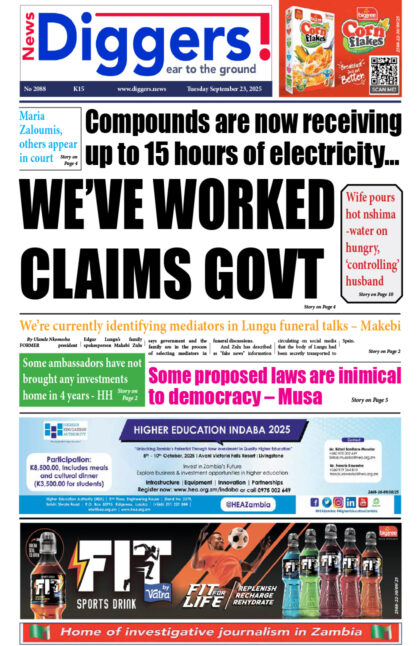A SURVEY has revealed that Zambia’s food security situation is expected to deteriorate with 1.98 million people expected to be facing high levels of acute food insecurity between September, 2020, and March, 2021.
According to the latest IPC Acute Food Insecurity Analysis, the deterioration coincides with the lean season when more households rely on the markets for food consumption.
“Between October, 2020, and March, 2021, Zambia’s food security situation is expected to deteriorate, as this period coincides with the lean season when more households will rely on the market for food. It is projected that about 1.98 million people will be facing high levels of acute food insecurity (IPC Phase 3 or above) during this period. The 2020/2021 rainfall season, which coincides with the projected period, has been forecast to be above-normal in most of southern Africa. Therefore, it is expected that poor households will be able to rely more on labour opportunities for food and income. Flooding, however, is also expected to increase, thereby affecting most of the households that live in flood-prone areas in the north and northern parts of the country,” the Survey read.
It further revealed that around 1.42 million faced high levels of acute food insecurity between July and September, 2020.
“According to the acute food insecurity analysis in Zambia, it is estimated that around 1.42 million people (22 per cent of the analysed population) were facing high levels of acute food insecurity (IPC Phase 3 or above) between July and September, 2020, despite increased crop production in most areas. That includes 1.24 million people in Crisis (IPC Phase 3) and nearly 190,000 people in Emergency (IPC Phase 4), who require urgent humanitarian action to reduce food gaps, protect and restore livelihoods and prevent acute malnutrition. These populations were affected by flooding, below-normal rainfall, a Fall Armyworm outbreak, and high maize prices. Although the price of maize has been on a decline since the start of the 2020/2021 consumption year, they will still remain above the five-year average. Out of the 64 districts analysed, 37 are classified in crisis (IPC phase 3), while 27 are classified in stressed (IPC phase 2),” it read.
The Survey, however, proposed that urgent action was required to save lives, reduce food consumption gaps and protect livelihoods for populations, among others.
“The following response priorities are proposed: Urgent action is required to save lives, reduce food consumption gaps and protect livelihoods for populations, especially those in Crisis (IPC Phase 3) or worse. Reduce food consumption gaps by improving access to food through appropriate modalities (such as community maize sales) for households in deficit areas. Promote resilience/climate smart agricultural production. Strengthen transboundary pest early warning systems; strengthen prevention measures for COVID-19. Ensure the country’s nutrition situation is monitored; strengthening of the livestock disease surveillance system in all areas. Enhance home-grown school meals in all the districts. Promote livelihood reconstruction and diversification and provision of water for both domestic and livestock use,” read the Survey.
It further added that COVID-19 will likely continue to pose risks to areas close to urban areas, as cases increase through the country if the government did not institute restrictions.
























